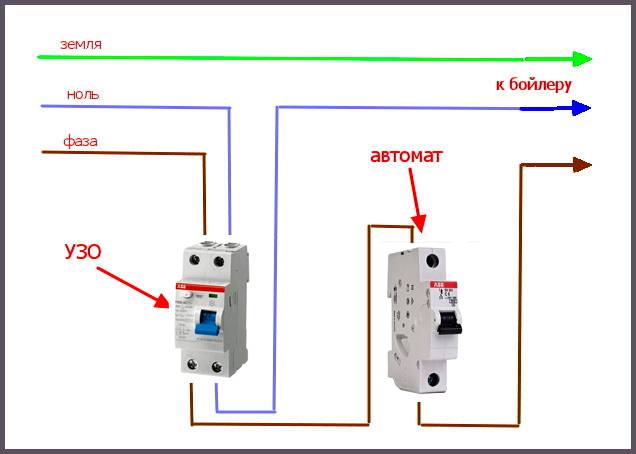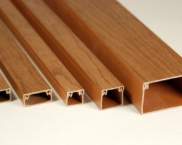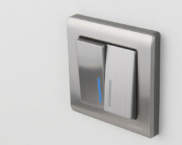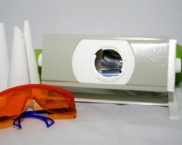An important addition to the power grid is an RCD: what is it?
Alas, one feature of almost every person is economy. And we love to save money on those things that will never be useful in everyday life (at least, everyone thinks so). This is just this kind of "trinket", and we will sort it out by the bones in this article. Have you ever heard the abbreviation RCD? You will find out what it is by reading the review to the end. In short, I would like to add that this device is able to protect housing and all its inhabitants from emergencies associated with electricity.
The content of the article
- 1 The principle of operation of an RCD: what is it?
- 2 RCD or differential machine: how to distinguish and what to choose?
- 3 Options for connecting an RCD to a single-phase network with and without grounding
- 4 Using filters paired with RCDs
- 5 Common errors during the connection process
- 6 Three-phase current leakage protection device
- 7 Let's sum it up
- 8 Video: RCD connection diagram
The principle of operation of an RCD: what is it?
Having deciphered the RCD, we learn that this is a residual current device, which for more than a dozen years, engineers have tried to bring to perfection and sharpen as much as possible for household needs. So it all started in 1950. At this time, the first edition of the PUE (electrical installation rules) was published. Of course, at that time there was no controversy about protection against current leakage, but closer to the 80s, everything changed. The rules never allowed the installation of an RCD in household networks, because the component parts of the device did not allow to catch interruptions in electricity of low currents (unlike large enterprises). But the perseverance of the developers and new technologies gave an official start to devices of this kind, which is reflected in the seventh chapter of the PUE.
The essence of the RCD
The current entering the apartment from the network flows through the phase wire, subject to the load from all devices. Upon reaching the end point, it goes back along the neutral cable. The values at the entrance to the premises network and at the exit must be the same. If the incoming indicator is greater than the outgoing indicator, it means that somewhere in the wiring there is a leak, which can lead to a fire. To avoid such cases, an RCD is installed.Its main purpose is to catch any changes in the power grid, and to make an emergency shutdown in case of voltage surges.
RCD from the inside
The device consists of simple elements:
- A differential transformer (or a zero-sequence device) that has three windings. The first and the second are closed at zero and phase. The third is connected to a mobile trigger, which is made of a relay or electronics.
- The trigger is enclosed in a power drive unit and a contact group.
- Test button. Serves for a trial disconnection of the network (with its help, they check the performance of the protective device).
An example of the machine
The RCD is installed at the network entrance to the room, through it the current enters and exits back. This process involves the primary and secondary windings, the first passes the incoming current through itself, and the second outgoing. During normal operation of the network, the forces are equal and the magnetic field inside the transformer is zero, because the current moves along the windings in different directions. In this mode, the RCD is inactive. Now imagine that somewhere in the wiring a wire is exposed and current leaks to the ground. Therefore, the output voltage changes and the resistance forces of the two windings are not equal. Excess current goes to the third coil, which activates the power mechanism, which turns off all the electricity in the apartment. But this does not happen immediately, since there is a margin for small voltage surges so that a false alarm does not occur.
Note! Experts categorically do not recommend installing protection in apartments with old wiring, arguing that the wires are worn out over time and can create a leak. In this case, the device will disrupt the operation of the networks. But everything is just the opposite, because in this way you can identify the presence of a breakdown in the wires.
Related article:
How to choose a 220V voltage stabilizer for your home. You are familiar with the problem of power outages, which is manifested in the flashing of lights. In the article we will talk about how to choose the right voltage regulator for 220v for your home in order to forget about this problem once and for all?
RCD or differential machine: how to distinguish and what to choose?
Both devices are very similar to each other, but if you dig deeper, then everything falls into place. Let's see how RCDs and differential machines work. The difference is quite significant.
Differences in work
- UZО - works only for current leakage to avoid fire, and to protect a person from electric shock. In the event of a short circuit or excessive network load, the device will not respond.
- Differential automatic machine - works with any faults in the wiring, short circuit, heavy load, leakage, overheating of the wires.
Connection features
- The protective device must be connected in parallel with standard circuit breakers. It is necessary that they always work in pairs, since one complements the other with the necessary properties.
Now you know how an RCD differs from a differential machine. Table 1. Average prices for single-phase devices The figure above shows the standard circuit for connecting an RCD in an apartment, which is grounded by a stationary circuit. The device crashes as close to the meter as possible, but after the main machine. The diagram also shows that in the TN-C system (this is the old wiring of the electrical network), it is forbidden to turn on the general protective device. If it is necessary to put an RCD into the old system, then its place is behind the secondary machines that go to individual devices. The maximum current of such devices is taken a couple of steps higher than that of the machine behind which it stands. When there is no land in the apartment, then the option for connecting the device is as follows The wires must only be connected in the sequence shown in the figure above. Interference from some household and digital appliances can interfere with the normal operation of the entire system. Magnetic filter rings come to the rescue, which discharges the created interference, before they enter the protective device. There are two mounting options. The filter is soldered directly into the body of the disconnecting device. The work is carried out only by a professional electrician. This set of rings simply slips onto the power cable, immediately after leaving the box. In order to avoid mistakes, you need to know what an RCD is. This device works in the same way as a single phase device. The difference is that the first has two wires for the winding, and the second has four.Attached below is a three-phase connection diagram. The detailed operating principle is described in the following video: It is simply unacceptable to neglect your own safety, do not feel sorry for yourself, have pity on your property. Electrical safety is very important, especially in our time when the number of household appliances is very large. You need to put an RCD without hesitation, because a latent threat within your walls can strike at any moment. What to choose?
Note! The cost of the protection device is much lower than installing many differential circuit breakers. But, the second is cheaper than an RCD + automatic machine. The choice is yours.
Class RCD image RCD Image of Difautomats Difautomat Price economy 
FH-202 AC-25 
WITH DIF-102 DEKraft 1500/700 rub. average 
F-202 AC-16 
DSH-941R C6 RUB 2500/2700 premium 
F-202 AC-40 
DS-201 C25 4000/4800 rub. Options for connecting an RCD to a single-phase network with and without grounding
And if there is no grounding?
Using filters paired with RCDs
Common errors during the connection process
Three-phase current leakage protection device
Let's sum it up
Video: RCD connection diagram
































